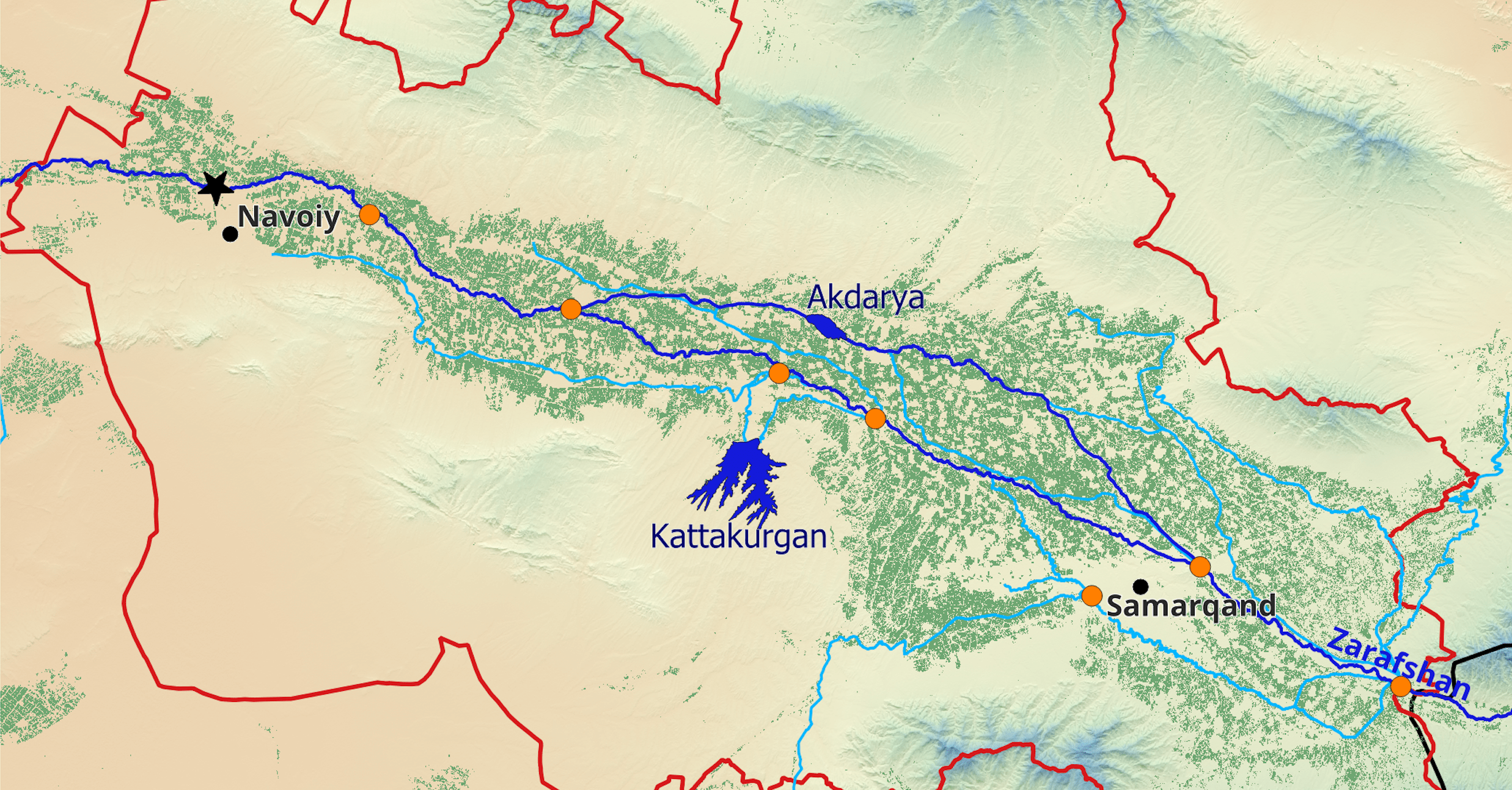Leveraging Remote Sensing for Floodplain Water Management in Nigeria
In this pilot study commissioned by the World Bank, hydrosolutions GmbH harnessed remote sensing data to assess the role of flooding on agricultural productivity in the Sokoto-Rima River Basin, downstream from the Bakalori and Goronyo dams in north-western Nigeria. We demonstrate how remote sensing can be used for improved strategising of water resource allocation in floodplains below multi-purpose dams, and thus to support sustainable water utilisation and mitigate the challenges posed by the region's climatic variability.
Upstream Multi-Purpose Dams on Sokoto-Rima River Floodplain
Maximum Area of Fadama Flood Recession Farmland
Estimated Total Dry-Season Rice Production Boost per 10 cm Increase in Rainy-Season Flood Levels
Estimated Maximum Controlled Release Capacity of Bakalori Dam
Optimising Nigeria's Water Resources
Nigeria is rich in water resources but faces challenges in evenly distributing these resources across the country. A key issue for policymakers is optimally utilising the existing storage capacity of the country's 264 dams, which primarily serve for hydroelectricity production, flood control, irrigation, and domestic water supply. Enhancing water management in floodplains below multi-purpose dams presents opportunities, particularly in Northern Nigeria's extensive Fadamas. A Fadama system is a traditional method of farming that involves cultivating crops on the floodplains of rivers during the dry season, utilising the residual moisture and fertile soil left by seasonal floods. Fadama systems play a crucial role in Northern Nigeria's food security by enabling year-round crop production, even during dry seasons.

Leveraging Remote Sensing for Floodplain Water Management
We employed remote sensing techniques for multiple key objectives in the Sokoto-Rima River Basin (Figure 1). These included:
- Map the multi-year surface water occurrence along Sokoto-Rima Rivers to determine the extent and the frequency to which floodplains are inundated.
- Delineate formal/non-formal water management zones in the vicinity of rivers including Fadama areas.
- By application of the CropMapper tool, identify zone-specific irrigated land use and cropping patterns (e.g., rice versus non-rice crops, cropping intensities)
- Establish a correlation between recurrent flooding events, agricultural productivity, and crop water stress.
- Identify flood-prone zones under an alternative dam management scheme.
- Assess the potential for increasing the agricultural productivity from augmenting the groundwater recharge from controlled water release from multi-purpose dams.
Multifaceted Relationship Between Crop Productivity and Flood Extent
The relationship between Fadama productivity and flood extent is multifaceted: The productivity of these systems is sensitive to water stress either in the form of too much (extent of flooding) or too little (agricultural drought). The extent and productivity of dry-season lowland rice within the Sokoto-Rima River floodplain (Figure 2) are heavily influenced by the floods of the preceding rainy season. We identify a consistent positive correlation between annual flood extent and dry-season productivity (Figure 3). On the other hand, in wet years, such as 2020, critical flood levels lead to a decrease of Fadama productivity in the months succeeding the rainy season. If floods reach upland areas the risk of crop failure is elevated.


Strategic Flood Management in Fadama Farming
The flood recession farming areas within the floodplain are found to be more than ten times the size of formal irrigation scheme areas, illustrating the traditional Fadama systems' importance for food security and rural employment. A key finding from this initial proof of concept stage is that suitable areas for dry-season rice cultivation are within a vertical distance of 3 meters from the lowest riverbed point. Beyond this, crop water stress intensifies, hindering productivity. The consistent correlation between annual flood extent and dry-season productivity implies potential benefits from artificial flooding during particularly dry years. Preliminary assessments suggest that downstream of the Bakalori dam, it might be possible to replicate a flood with a two-year recurrence interval through controlled water release from the dam.
A Way Forward: Advancing Agricultural Water Management and Policy
The insights gained from this assessment contribute valuable knowledge that could inform the development of an operational platform that guides agricultural water management in river floodplains associated with multi-purpose dams. Currently, our work illustrates the capability of remote sensing to provide the relevant data to inform such a system. Moving forward, additional research on the duration of flooding necessary for effective shallow groundwater recharge is necessary. Once confirmed, this could pave the way for alternative operational dam management guidelines, integrating technical and economic considerations for enhancing the region's agricultural productivity. Such advancements promise a more resilient agricultural sector capable of adapting to the challenges of water variability in the face of climate change.
Downloads
More Projects






